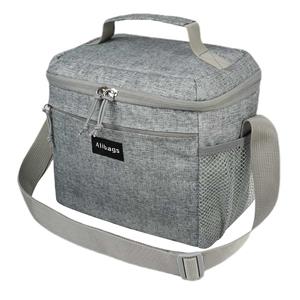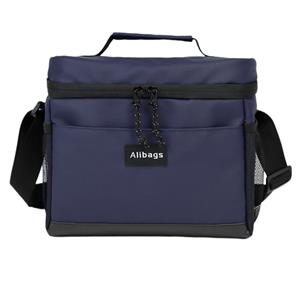Leakproof Cooler Bags: The Science Behind the Seal
The effectiveness of leakproof cooler bags lies in the sophisticated science and engineering principles that govern their design and construction. Understanding the technology behind these bags can help outdoor enthusiasts make more informed purchasing decisions and appreciate the innovation that goes into creating such reliable products. From material selection to thermal dynamics, every aspect of a leakproof cooler bag is meticulously engineered to provide optimal performance.

At the core of a leakproof cooler bag's functionality is its multi - layered construction. The outer layer is typically made from a high - strength, water - resistant fabric. This fabric is chosen for its durability and ability to withstand the rigors of outdoor use, including resistance to abrasions, tears, and UV degradation. The specific material used can vary, with options such as polyester or nylon, each offering different balances of strength, weight, and water - resistant properties. Some advanced models even incorporate rip - stop technology, which prevents small tears from spreading and compromising the bag's integrity.
The middle layer of the cooler bag is dedicated to insulation. This layer is where the science of thermal dynamics comes into play. High - performance insulation materials, such as closed - cell foam or vacuum - insulated panels, are used to slow down the transfer of heat between the interior and exterior of the bag. The principle at work here is the reduction of conductive and convective heat transfer. Conductive heat transfer occurs through direct contact between materials, while convective heat transfer involves the movement of heat within fluids (like air). The insulation materials create barriers that impede these heat transfer mechanisms, maintaining a stable temperature within the bag.
The inner layer of the bag is a seamless, waterproof membrane. This membrane is crucial for the bag's leakproof capabilities. It is often made from materials like PVC or TPU (thermoplastic polyurethane), which are known for their excellent waterproofing properties and flexibility. The membrane is bonded or sealed to the outer layers, creating a continuous barrier that prevents any liquids from penetrating through. The quality of this bond is critical, as any imperfections could lead to potential leak points.
The closure system of a leakproof cooler bag is another area where science meets practical design. Waterproof zippers are a common feature, and their effectiveness relies on a combination of materials and engineering. The zipper teeth are typically made from materials that can form a tight seal when closed, often with a waterproof coating or integra. Additionally, the zipper pull and surrounding fabric are designed to protect the seal from stress and potential damage. Some bags use alternative closure systems, such as magnetic seals or Velcro - like fasteners with waterproof backing. These systems work by creating a compression seal that prevents air and moisture from passing through.
The shape and structure of the cooler bag also influence its performance. Many bags are designed with anatomically shaped bodies that conform to the contours of the human body when carried on the shoulder or back. This not only improves comfort but also helps maintain the integrity of the seal by reducing strain on the closure system. Reinforced corners and base areas provide additional protection against impacts and wear, extending the bag's lifespan.
The thermal efficiency of leakproof cooler bags is measured by their ability to maintain a specific temperature over time. This is influenced by factors such as the type and thickness of insulation, the quality of the seal, and the bag's exposure to external temperatures. In laboratory testing, cooler bags are often evaluated based on how long they can keep a known volume of ice from melting under controlled conditions. These tests provide valuable data that manufacturers use to refine their designs and make performance claims.
Understanding the science behind leakproof cooler bags can help consumers identify products that truly meet their needs. For example, a bag with higher - quality insulation materials may offer better temperature retention but could be heavier or more expensive. Similarly, a bag with a more robust closure system may provide a better seal but could be more difficult to operate with gloved hands. By balancing these factors based on their specific use case, consumers can select a cooler bag that offers the best possible performance.
In conclusion, the science behind leakproof cooler bags involves a complex interplay of material science, thermal dynamics, and engineering principles. Each component of the bag is carefully designed to contribute to its overall leakproof and insulation performance. By appreciating this science, outdoor enthusiasts can make more educated choices when selecting a cooler bag and gain a deeper understanding of why these bags are such valuable tools for outdoor adventures.





